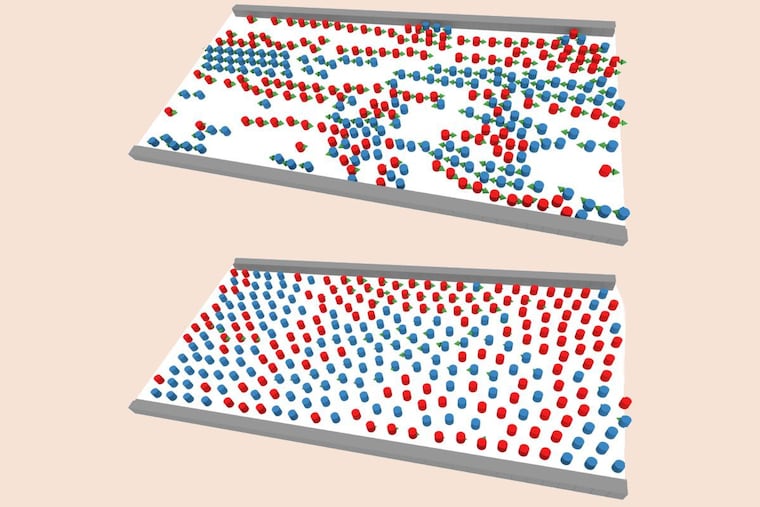How the 6-foot social distancing rule may backfire in crowded spaces
In tight spots, it may be smart to sacrifice some personal space in order to keep moving, a Carnegie Mellon study suggests.

We’ve all become adept at the COVID two-step: a deft move to one side of the sidewalk, say, accompanied by a polite “we’re all in this together” nod. But what about navigating busy corridors like those at Philadelphia’s Suburban Station?
A new study suggests that the 6-foot social distancing rule — still widely promoted after all these months — can backfire. If too many pedestrians follow that guidance while trying to squeeze past each other, traffic can grind to a halt.
Better to sacrifice a bit of personal space when appropriate and keep moving, said senior author Gerald J. Wang, an assistant professor of civil and environmental engineering at Carnegie Mellon University. That way, a pedestrian can minimize the amount of time in an enclosed space where someone may be spreading the coronavirus.
“You want to give guidance that people can, in good faith, follow,” he said. “We should be telling people that more space is better, but that 6 feet ought not to hold such a sacred place in people’s minds.”
The findings came from simulating the flow of pedestrians as if it were fluid moving through a pipe — a common approach among researchers who study the behavior of crowds at concerts, religious pilgrimages, and other large public events.
Wang and his coauthor, undergraduate Kelby Kramer, found that the point at which a corridor becomes clogged depends on three factors: the width of the “pipe,” the number of people, and the amount of separation they are trying to maintain.
That much may seem obvious. But the duo, whose study was published Tuesday in the journal Physics of Fluids, determined that even a small increase in the desired amount of personal space would result in a steep decline in foot speed.
Take a 10-foot-wide corridor, for example. In normal times, when people are comfortable being as little as 3 feet apart from one another, the authors found that walking speed would start to decline noticeably at a density of one person per square meter — an area equivalent to the top of a card table.
But with the 6-foot rule in effect, walking speed would decline noticeably when the hallway was just one-third as crowded, with one person occupying the area of three card tables.
In other words, when pedestrians try to maintain twice as much interpersonal space — 6 feet instead of 3 feet — the density at which traffic starts to slow down declines by a factor of three. A bit of social distancing can clog things up in a hurry.
Alan Jeffrey Giacomin, the editor of the journal and an engineering professor at Queens University in Kingston, Ontario, said the concept made sense.
“If you stick rigidly to the social distancing,” he said, “you’re going to come to a halt sometimes because you can’t get through.”
Future studies should combine the Carnegie Mellon results with models of how viruses circulate in enclosed spaces of various configurations, he said. That could give people an idea of how long to remain in a space of a given size.
Early in the pandemic, researchers estimated that a person with COVID could infect someone else within 15 minutes of exposure. With the emergence of the more transmissible delta variant, the exposure window is thought to be lower. And widespread vaccination changes the equation further.
As with so much guidance during the pandemic, the number of variables is enough to sow confusion in anyone.
But Wang, the study author, said it’s always appropriate to incorporate common sense. Yes, try to stay apart from others when indoors. But not to the point that you can’t get to your destination.
“You’re basically executing larger lateral motions to try to get out of somebody else’s way,” he said. “It will flow a lot better if people agree to short-term violations of distancing.”